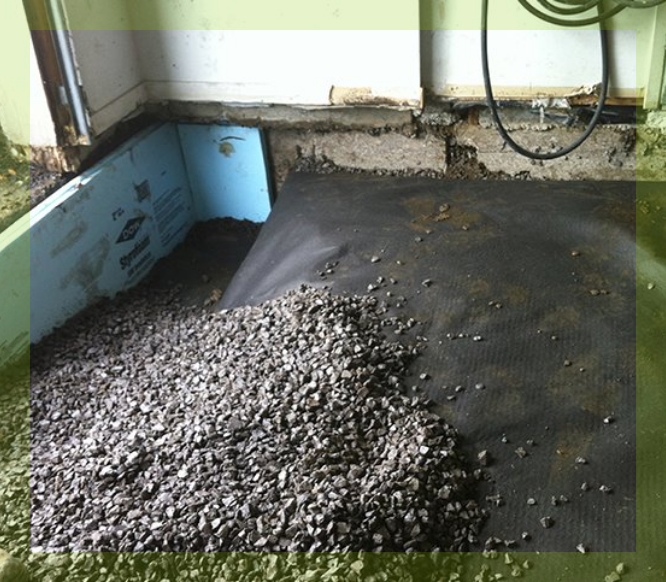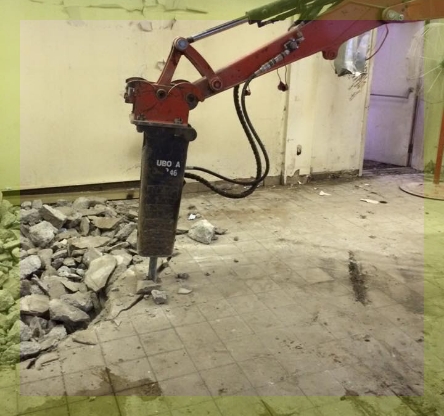Pyrite removal
Protect your concrete slab with Fondabec

What is pyrite and why is it a problem?
Pyrite (FeS₂) is an iron sulphide mineral present in certain sedimentary rocks and backfill materials used in foundation construction. In the presence of moisture and oxygen, pyrite oxidises, causing:
- expansion of the backfill
- upward pressure on the slab
- cracks in the concrete floor and sometimes in the walls.
What are the signs of pyrite?
Cracks or lifting of the slab
The swelling caused by pyrite oxidation exerts upward pressure, which results in cracks in the concrete slab. These cracks are often in the form of a road map (irregular mesh), star-shaped, multiple and spread over a wide area. In some cases, you will notice localised or general slab lifting, sometimes accompanied by a change in level noticeable to the touch or sight.
White efflorescence on the concrete
Doors or partitions that warp
How do you confirm the presence of pyrite?
Certified pyrite test (IPPG index)
The only reliable way to detect pyrite is to have a laboratory test carried out on a sample of backfill taken from beneath the slab. This test calculates a swelling potential index (IPPG):
- 0 to 10 = low risk
- 11 to 20 = moderate risk
- 21 and above = high risk
This test is often required during a real estate sale, a claim or an insurance request.
Pyrite removal: how does the work proceed?
Once pyrite is confirmed by an IPPG test and the risk assessed, complete removal of the contaminated backfill becomes essential. It’s not enough to seal cracks or pour a new slab: to solve the problem at its source, all swelling materials beneath the slab must be removed and rebuilt on sound foundations.
At Fondabec, we follow a proven, safe process in line with industry best practices to ensure a durable correction wherever you are in Quebec.

Demolition of the existing slab
Excavation and removal of the contaminated backfill
Replacement with a DB certified backfill (concrete slab)
Pouring a new concrete slab
- vapour barrier
- wire mesh or reinforcement
- standard or reinforced thickness depending on load
- integrated perimeter drainage as required.
A doubt or a question about a pyrite problem?
For more than 20 years, Fondabec has assisted homeowners in Greater Montreal and across Quebec with pyrite removal projects. Whether you are in Laval, Longueuil, Terrebonne, on the North Shore, the South Shore or in rural areas, our team travels quickly to assess your situation and offer the most durable solution.
FAQ
How much does pyrite removal cost?
Is it covered by homeowners’ insurance?
Can you simply seal or inject a crack caused by pyrite?
Do you need to replace the entire slab if pyrite is present?
Is an IPPG test mandatory before selling a house?
It’s not mandatory, but strongly recommended, especially if the building was constructed between 1980 and 1995, or if there are visible signs (cracks, lifting). In addition, many buyers and financial institutions now require it at the time of sale.
For over 20 years, Fondabec has been assisting homeowners in Greater Montreal and throughout Quebec with their excavation projects.
- 957 Rue des Forges, Terrebonne, QC J6Y 0J9
- (514) 838-5379
- info@fondabec.ca
-
Monday to Saturday
7:00 am to 6:00 pm

